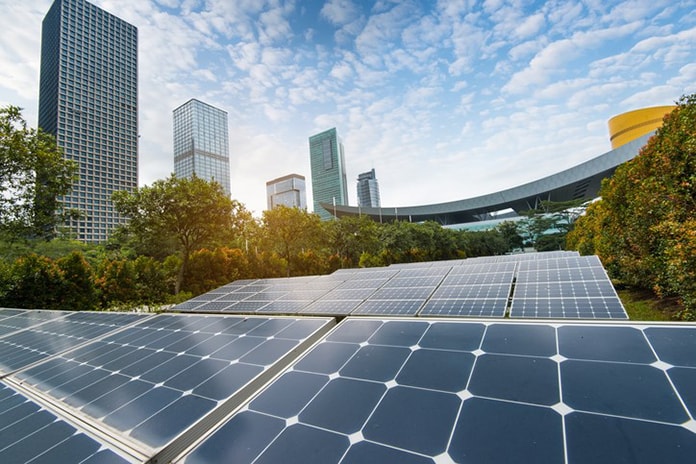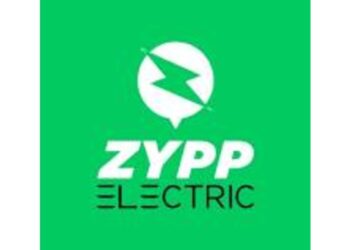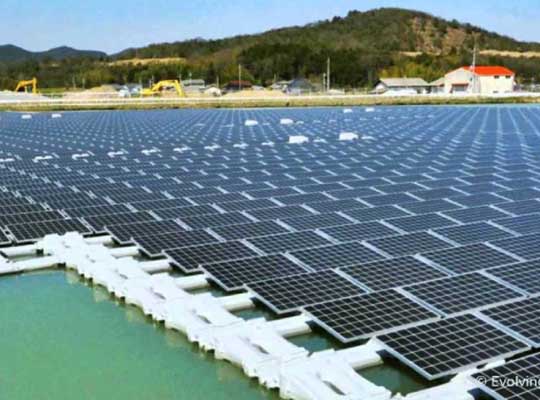Covid -19 pandemic has brought the world into a standstill and has impacted almost every sector. Now with the unlock4.0 when the things are settling down, every industry can cope up the damage caused by the lockdown as per their capabilities and requirements. Solar energy sector has been highly affected in these unprecedented times. There is a lot of uncertainty in the industry currently and the solar energy sector should be bounced back after this crisis ends that will decide how quickly we achieve our renewable energy target of 100 GW by 2022. Solar rooftop sector has been badly affected because of two reasons: one is its labour cost and other one is its dependence on the country’s commercial and industrial sectors. Today in India the present power demand has reduced by 25-30 per cent. This decline in demand with reduced collection and slow recovery will adversely impact already stressed Distribution companies by creating a cash gap of approx. Rs. 40,000 cr. Industries invite very high fixed costs with reference to their monthly power bills. Solar power can come to their rescue by reducing their bills by Upto 80%. The reduction is dependent on the following factors:
- Load and Consumption profile
- State policy
- Technology used
- Design
With Levelised Cost of Electricity at less than Rs.2 / Kwh, corporates are rising up to the challenge of coming up to speed technically and commercially towards investing in solar in-site and off-site solutions.
Impact due to Covid -19:
Due to covid-19 and nationwide lockdown, ongoing Solar projects in the country have been halted, power companies are facing disruption and developers are concerned about the delays their projects are facing because of the production slowdown in China. Even today, the solar industry is relying on China for around 80% of its requirement of solar supply. All Imports related to solar power equipment in January 2020 had declined by about 70% as compared to January 2019. Industry players have been facing delays in procurement of modules, solar cells, and other components all because of covid-19. Also, about 85% of the labour in the solar energy sector are migrants, many of which have returned to their villages and are likely to be away for some time until the lockdown will be completely lifted.
Challenges post lockdown:
Once the lockdown is over, the major impact in the performance of solar energy plants will be availability of spares and manpower for maintenance. As the high wind season is approaching in the coming months planned maintenance will also become a challenge. Execution work at new projects have come to a standstill. Even though force majeure conditions will enable extension for completion period; migrant labours will take quite some time to reach project sites. Solar energy projects, unlike other infrastructure projects, hardly take 6-9 months to complete once land and evacuation facilities are available and this is only possible by deploying a large number of workforces for a shorter duration.
Role of Solar Energy sector to bounce back the economy post Covid:
The solar capacity addition in India in Q1 2020 was the lowest since Q4 2016. However, according to a recent report by the International Energy Agency (IEA), while renewables are not immune to the COVID-19 crisis, they are more resilient than other fuels. The agency noted that in 2021, the solar energy sector is expected to spring back up again as currently delayed projects start to come back online. In 2021, it expects to reach the same level of renewable capacity additions globally as in 2019. Renewable energy especially the solar energy sector is at the cusp of this opportunity as it delivers cheaper, cleaner electricity – with the right regulatory and policy framework, it could be the way forward when compared to conventional electricity.
Moreover, the number of direct and indirect jobs that will be created as a result of the construction and maintenance of renewable assets will be an added advantage post the lockdown will be lifted to revive the economy when increasing unemployment is a concern. Renewable energy, especially from solar, has long edged past the point of grid parity and are now cheaper than conventional energy. This economic rationale would itself mean a fillip for renewable energy in the post-COVID-19 phase.
The power sector is a lead indicator of economic growth. After lockdown, we expect all incremental power capacity addition to be from renewables. Thus, investment in, and capacity roll-out of renewable energy is a precursor to the health of the economy. This will add value to revive the economy of the country. This pandemic is also a lesson for the Companies to not rely solely on one country for their technical equipment and move towards being more diversified and domestic production of commodities. The construction phase of solar however, is very employment-intensive and, to some extent, operation and maintenance of solar generate significant employment in our communities.
Thus, Job security and job creation will probably be the most important factors in determining how India manages to combat the economic slowdown post-COVID-19. Because thousands of people are engaged with full-time contracts in construction of assets every year, by solar developers, operations, maintenance and cleaning of solar assets result in part-time employment opportunities to several thousand people from remote and rural areas.
Government’s role to revive the economy post Covid
Government of India has also taken many proactive fiscal measures like Repo rate cut to 4.4 per cent, three months moratorium on principal and interest repayment for term loan and working capital facilities to revive the solar energy sector The solar industry is seeking some respite from the government so that they can stay afloat during this economic crisis and work towards meeting the long-term renewable energy targets of the country. A strong and strategic revival plan is a very important post covid for the industry to help achieve its targets on time.
More targeted policy introductions need to be done to support decentralized projects such as Rooftop Solar and provide incentive to domestic production of Solar cells, modules, and other equipment. This crisis provides an opportunity to the Government of India to lead by example and create a stimulus plan which is green, efficient, and progressive. Recently, the International Renewable Energy Agency’s (IRENA) Coalition for Action comprising over 100 companies in the renewable energy industry from across the world wrote to governments putting forth recommendations on how governments can ensure a rapid and sustained economic recovery of the Renewable energy sector that aligns with climate and sustainability objectives. They emphasized the role renewable energy could play in these strategies by providing reliable, easy-to-mobilize, and cost-effective electricity for essential services.
Recently, Prime Minister Narendra Modi highlighted the importance of building local manufacturing capacity while launching a 750-MW solar plant in Madhya Pradesh. His statement of a liquidity injection package of Rs 90,000 crore to power distribution companies as part of the Centre’s ‘Atmanirbhar Bharat Abhiyan’ economic stimulus. The Rs-90,000-crore economic package to the power sector is almost equal to the pending bills of many power-generating companies, including the solar energy sector.
Post Covid, more financial aid is required to boost local manufacturing, given India relies on China for about 80% of its solar inputs. The Centre should grant more financial aid to the solar energy sector and decentralised model of solar energy development that does not endanger grasslands and desert ecosystems. Government-supported financial institutions need to step forward and take the lead in scaling up long-term investment into India’s solar energy sector.

About the Author: Puneet Goyal, Co-Founder of SunAlpha Energy (www.sunalphaenergy.com/) is one of the leading solar focused conglomerates providing turnkey EPC (Engineering, Procurement & Construction) services along with CMC (Comprehensive Maintenance Contract) services to Industrial, Commercial & Residential consumers across India and abroad. With offices in Jaipur, Chennai, Hyderabad, Kolkata, Ahmedabad & Singapore












